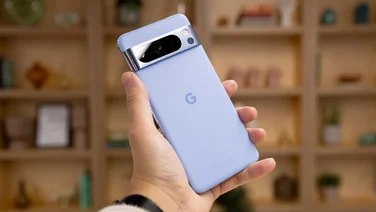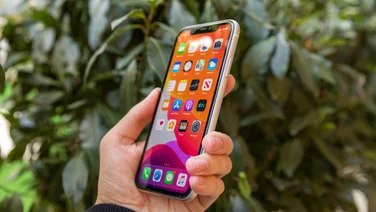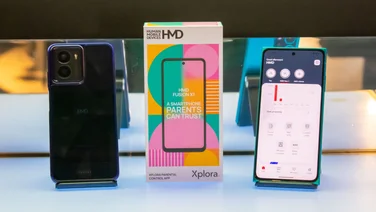To help us provide you with free impartial advice, we may earn a commission if you buy through links on our site. Learn more




The Sony Xperia M was released in 2013, bringing distinctive Sony design to a mid-range handset. It’s still available today on various contracts for around £10, but considering how far the smartphone sector has moved in the last year, is it still a phone you can live with for a two-year contract?
The Xperia M takes its design cues from Sony’s upper tier Xperia Z devices while attempting to keep costs down to cater for buyers on a budget. The Xperia M is surprisingly well built and disguises its cheapness with a soft, slightly rubberised shell which wraps around the device, giving the illusion of a unibody chassis. The round, silver power button is a distinctive design choice and does rather stick out both visually and physically, and can be an annoyance when idly holding the phone in your right hand – we found we sometimes pressed it accidentally. At 9.3mm thick and weighing 115g, the M will fit comfortably in almost any pocket.

The phone’s 4in, 480×854 pixel TFT touch screen is a little disappointing, as it’s not as bright nor has the colour accuracy of other similarly-priced phones; our calibrator measured it as showing 81.1% of the sRGB colour gamut, which is one of the lower scores we’ve seen, even among budget handsets. The screen’s resolution is acceptable for most uses, with even small text appearing fairly crisp and legible. Performance in bright daylight is good, with the auto brightness setting managing to respond rapidly to changing lighting conditions.

The Xperia M runs Android 4.1.2 Jelly Bean, which is the oldest version of Android we’d recommend you consider. There’s no Android KitKat or Lollipop for this older phone, unless you choose to take a risk on an unofficial ROM. The phone uses Sony’s custom Xperia user interface, which has many tweaks that set the device significantly apart from phones running stock Android. The app drawer, for example, can automatically sort apps in order of how often they’re used, and also allows the user to set their own custom order, which is highly useful when you have a great deal of apps installed.
The Xperia M is powered by a dual-core Qualcomm Snapdragon S4 processor running at 1GHz. Normally, this chip would run at 1.7GHz, but in order to boost battery life Sony has detuned it. It performed reasonably well in our benchmarking tests, managing 1546ms in the SunSpider Javascript test, which is fair for a budget phone.
Running games such as Temple Run 2 and Angry Birds Space was a smooth and responsive affair, showing the Xperia M still packs some punch when required. Putting the device through its paces by loading and browsing image-heavy web pages was a challenge, with some jerkiness and lag, and we had to use some fine pinch-to-zoom actions to zoom in on web pages to make them legible.
The Xperia M’s battery life is good, with the 1,750mAh unit lasting a good 10 hours 46 minutes in our video playback test. Sony has attempted to aid heavy users with various battery-saving functions. These include Stamina Mode, which turns off mobile data when the screen is off, and Low Battery mode, which lets you set when various battery-intensive features such as Wi-Fi and high screen brightness are disabled.

Typing messages on the Sony Xperia M is a mixed experience. Autocorrect and predictive word recommendations work very well, but the time saved there is instantly lost by the lack of immediate access to any form of punctuation. Finding full stops and commas requires navigation to a second page of characters, but if this annoys you it’s easy to add them back in using the keyboard settings wizard or a custom keyboard app from Google Play. The phone only has a small 4GB of onboard storage for apps, though, so you’ll most likely need to plug in a microSD card.
The Xperia M comes with Sony’s various multimedia services installed, including Video Unlimited and Music Unlimited. Price and the depth of content on offer is on a par with most other digital stores, but if you’re already embedded in another ecosystem such as Google or Amazon, there’s no compelling reason to switch to Sony’s services.
Sony has put the spotlight on NFC technology in its Xperia line, with its NFC music playing functionality taking prime placement in the product’s promotional material. For this to work you need to buy a Sony-branded speaker, so it seems like more of a gimmick than anything. However, NFC is becoming increasingly popular for mobile payments and ticketing systems, so having it as standard on a cheaper device is a big plus point.

The 5-megapixel camera on the back of the Xperia M is a disappointment. Outdoor images appeared washed out and lacked any kind of definition. Its only saving grace is its performance with close-up objects, where the autofocus works very well. We do like the dedicated camera button on the side of the device, which is useful for quick capturing of unplanned photo opportunities.
The Sony Xperia M is a generally a fine budget handset. It ticks the boxes for build quality and demonstrates satisfactory performance, and on a good value contract would be a prime choice. However, its mediocre screen and poor camera are both drawbacks, especially when you consider how competitive the circa £100 price bracket is. For similar money you can get an excellent 4G Motorola Moto G, Moto E or a Nokia Lumia 630. If you can pick one up for cheap second-hand, though, it’s a perfectly capable handset.




